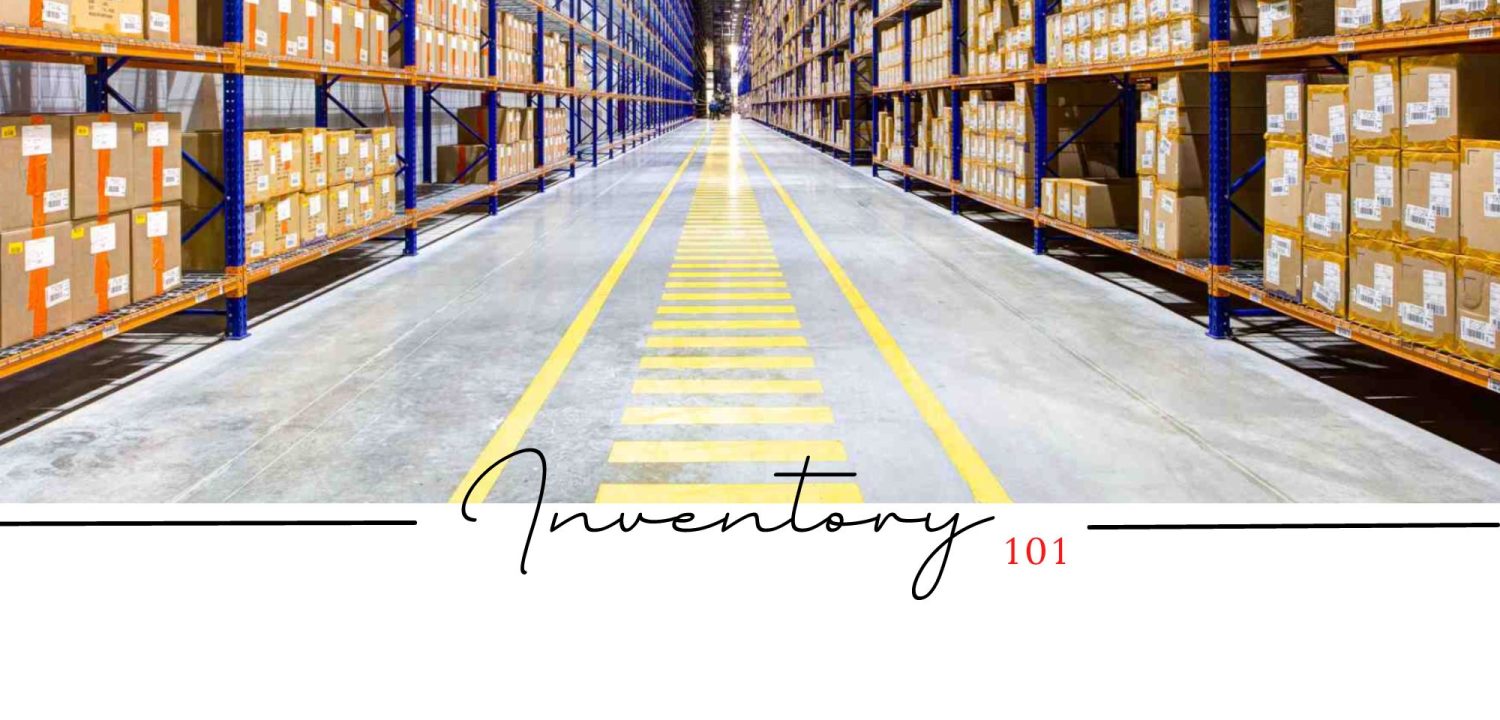Inventory 101
Inventory management is an essential part of running any business that sells products or services. It involves tracking the quantity and value of goods that a business has on hand, as well as managing the flow of those goods in and out of the business. In this Inventory 101 article, we will cover the basics of inventory management, including the types of inventory, the costs associated with inventory, and the different methods of inventory tracking.
Types of Inventory
There are three main types of inventory that businesses typically manage:
- Raw Materials Inventory: This inventory consists of the materials and components that a business uses to produce its products.
- Work-in-Progress (WIP) Inventory: This inventory includes the products that are in the process of being manufactured or assembled.
- Finished Goods Inventory: This inventory includes the final products that are ready to be sold to customers.
Costs of Inventory
Inventory costs can be significant, and it’s important for businesses to understand these costs in order to manage their inventory effectively. The costs associated with inventory can include:
- Holding Costs: These are the costs associated with storing inventory, such as rent, utilities, insurance, and labor.
- Ordering Costs: These are the costs associated with placing and receiving orders for inventory, such as purchase orders, shipping fees, and receiving fees.
- Shortage Costs: These are the costs associated with running out of inventory, such as lost sales, backorders, and rush shipping fees.
Methods of Inventory Tracking
There are two main methods of inventory tracking:
- Periodic Inventory System: With this method, inventory levels are only checked at specific intervals, such as monthly or quarterly. This method requires manual counting of inventory, and is less accurate than the perpetual inventory system.
- Perpetual Inventory System: With this method, inventory levels are tracked in real-time using technology such as barcode scanners and point-of-sale (POS) systems. This method provides a more accurate and up-to-date record of inventory levels, and can help businesses avoid stockouts and overstocking.
Inventory Management Best Practices
To effectively manage their inventory, businesses should follow these best practices:
- Set par levels for each item: Determine the minimum amount of inventory that should be kept on hand to ensure that there are no stock outs.
- Use inventory management software: Implementing inventory management software can help businesses track inventory levels and automate tasks such as ordering and receiving.
- Monitor inventory turnover: Track how quickly inventory is being sold and adjust purchasing strategies accordingly.
- Conduct regular audits: Regularly audit inventory levels to ensure accuracy and identify any discrepancies.
Inventory management is a critical component of running a successful business. By understanding the types of inventory, the costs associated with inventory, and the different methods of inventory tracking, businesses can effectively manage their inventory and optimize their operations. By following best practices such as setting par levels, using inventory management software, monitoring inventory turnover, and conducting regular audits, businesses can minimize costs and maximize profits.
Inventory Definition
Inventory refers to the goods and materials that a business holds for the purpose of sale or for use in the production of goods or services. These items can include raw materials, finished goods, work-in-progress, and supplies. Inventory is a critical component of any business that deals with physical goods, and it is an important measure of a company’s financial health. Inventory is usually listed as an asset on a company’s balance sheet, and its value is calculated based on the cost of acquiring or producing the items. Effective inventory management is essential for businesses to optimize their cash flow, meet customer demand, and maximize profits.
Examples of Inventory
Inventory is a term used to describe the goods and materials that a business holds for the purpose of sale or for use in the production of goods or services. Here are some examples of inventory in different industries:
- Retail Inventory: In a retail business, inventory typically includes finished goods that are ready to be sold to customers. This can include clothing, electronics, home goods, and other consumer products. Retailers may also hold inventory of raw materials, such as fabric or yarn, that are used to create finished goods.
- Manufacturing Inventory: In a manufacturing business, inventory can include raw materials, work-in-progress, and finished goods. Raw materials are the materials that are used to create the finished product, while work-in-progress refers to partially completed products that are still being assembled or processed. Finished goods are the final products that are ready to be sold to customers.
- Food Inventory: In the food industry, inventory can include raw ingredients, such as fruits, vegetables, and grains, as well as finished products, such as packaged foods or meals. Restaurants and food service businesses also hold inventory of supplies, such as paper goods and cleaning products.
- Healthcare Inventory: In the healthcare industry, inventory can include medical supplies, such as gloves, gowns, and masks, as well as pharmaceuticals and medical equipment. Hospitals and clinics also hold inventory of office supplies and other materials necessary for day-to-day operations.
- Construction Inventory: In the construction industry, inventory can include raw materials, such as lumber and concrete, as well as finished products, such as building materials and fixtures. Construction businesses also hold inventory of tools and equipment used in building projects.
- Service Inventory: In the service industry, inventory can include items such as spare parts and supplies for maintenance and repairs, as well as consumable items such as cleaning supplies, paper products, and food and beverages.
In each of these industries, inventory plays a critical role in the success of the business. Effective inventory management is essential to optimize cash flow, meet customer demand, and maximize profits.
Is Inventory a Current Asset?
Yes, inventory is considered a current asset on a company’s balance sheet. Current assets are defined as assets that are expected to be converted into cash within one year or less. Since inventory is generally expected to be sold within a year or less, it is classified as a current asset.
The value of inventory is listed on the balance sheet as the cost of acquiring or producing the items. This cost is typically calculated using one of several methods, such as the first-in, first-out (FIFO) method or the last-in, first-out (LIFO) method.
Effective inventory management is critical for businesses to optimize their cash flow and maximize profits. If a company has too much inventory on hand, it may tie up cash and increase storage and holding costs. On the other hand, if a company has too little inventory, it may not be able to meet customer demand, which can negatively impact sales and profits.
In addition to being a current asset, inventory is also an important measure of a company’s financial health. By monitoring inventory levels and turnover, businesses can gain insights into their efficiency, productivity, and profitability.
Overall, inventory is a key component of a company’s financial statements and an important consideration for businesses of all sizes and industries.




